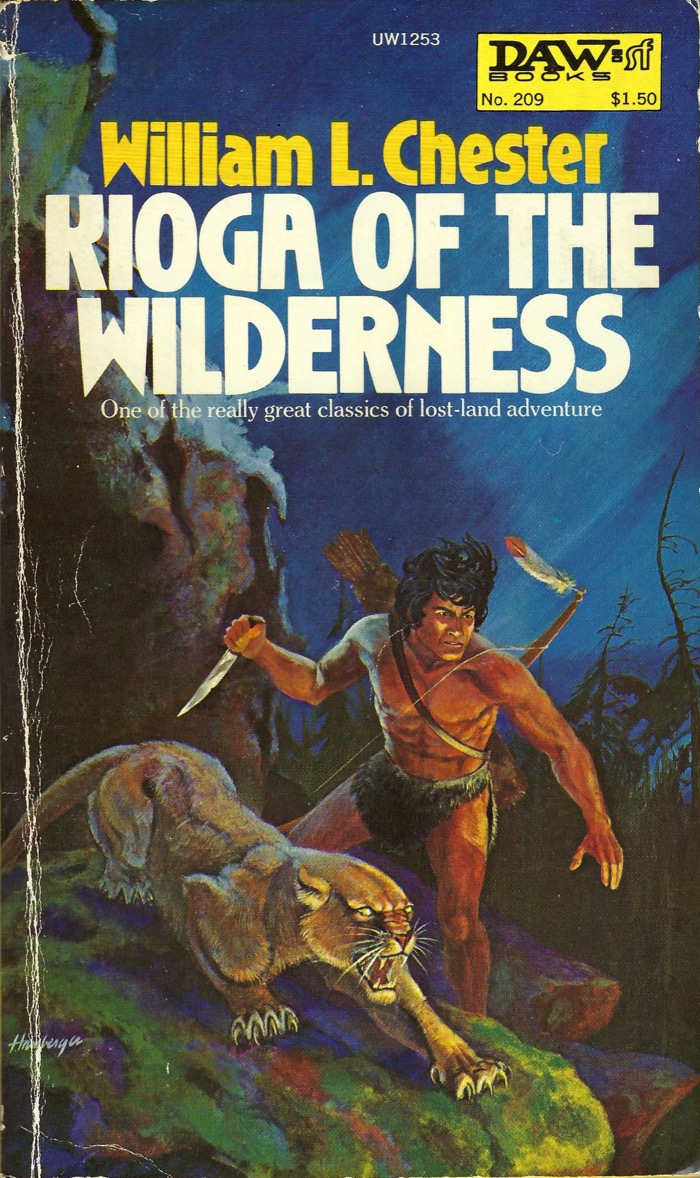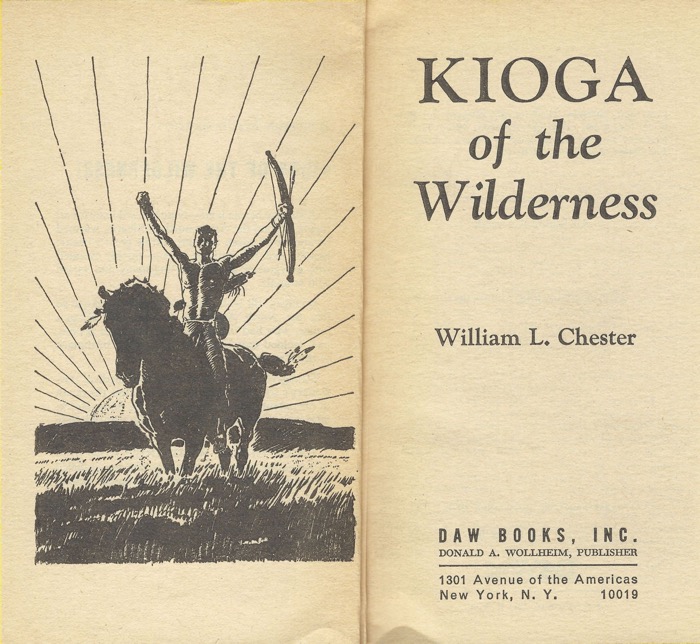Kioga of the Wilderness
Series: Kioga 2
Reviewed date: 2022 Nov 16
Rating: 2
303 pages
The further adventures of store-brand Tarzan
Kioga is back, and oh boy! Remember how the first Tarzan book ended with Tarzan and Jane not voicing their love for one another, and it isn't until the end of the second book that they are paired up? It's the same with Kioga and Beth La Salle. Just like with Tarzan, it takes until the closing pages of book two for the hero and love interest to be properly united.
Plot synopsis
In broad strokes the plot is such: Kioga persuades a tribe of Indians to leave their reservation and come with him to Nato'wa. He leads them north through Canada, then across the polar ice and ocean and eventually to Nato'wa. There he abandons them, gets hit on the head and goes blind, stumbles around the forest for a while, falls in with the Wa-Kanek plains Indians for a while.
Meanwhile Beth La Salle and her brother Dan enlist James Munroe and they undertake a voyage to Nato'wa to rescue Kioga. They encounter pirates but eventually reach Nato'wa. They meet the Shoni tribe, and there is a lot of politicking and eventually a violent power struggle ensues. The Long Knife society is back, of course, and the Americans teach the Shoni how to manufacture gunpowder, cannons, and guns, so the carnage and the killing is extensive.
Kioga is not Tarzan, and that's a problem
The first big problem is that Kioga is not Tarzan. Remember when Tarzan adopted the Waziri tribe? Sure it was colonialist and imperialist and whatever, but at least he took care of them. Kioga persuaded a bunch of reservation Indians to come with him to Nato'wa for a better life, but they all died along the way. They did in the cold, they died because they hadn't the strength for the journey. They died because Kioga led them into a harsh wilderness when he knew they did not have the skills to survive. When he finally arrived in Nato'wa with only a handful of them left alive, he abandoned them, they were captured by a raiding party, and in the end their tribe was totally destroyed. If I recall correctly, only a single one of them survived to the end of the book. Kioga's hubris in thinking he could save these reservation Indians ended up with him being the catalyst for their genocide. I'm sure that's not how Chester intended it to come across--indeed, he portrays the various deaths as honorable--but it's what happened.
The Heladi problem
The other problem is what to do with Heladi, Kioga's Shoni love interest. She can't end up with Kioga because Kioga must be paired up with Beth La Salle. I'm glad to inform you that Chester did not opt to kill off Heladi. Instead, she and Dan La Salle fall in love. It's a neat solution to the problem.
More of the same
As for the book, the biggest problem is that it's more of the same. Some of the same plot points are repeated from the first book: pirates, the Long Knife society, the disunity of the Shoni tribes, Kioga spending time among the Wa-Kanek. I'd like to see something new.
The missing elements
More broadly, Chester's Kioga stories are missing the element that makes Burroughs's Tarzan stories so captivating: the fanciful and outlandish pocket civilizations. The Indians in Nato'wa are just regular American Indians transplanted to a continent where Europeans never colonized. But that's all they are. There is nothing new: no new society, no new culture, no new inventions. Just regular stereotypical Indians. Burroughs would have given us something new.
For example: reimagine the plains Indians without horses. Or if they must ride, have them ride mastodons, or have them domesticate large Dire wolves to ride. Maybe give them some living dinosaurs--therapods or small ceratopsians--as pack animals. But Chester just gives them horses.
Or imagine the plains Indians with agriculture. Or have them become great builders, with walled cities and immense towers. Chester just makes them hunter-gatherers who live in teepees.
There is so much potential here, but instead we have an entire lost continent of American Indians with no white influence, but they still have horses and are exactly like regular stereotypical American Indians. It's a disappointment.

